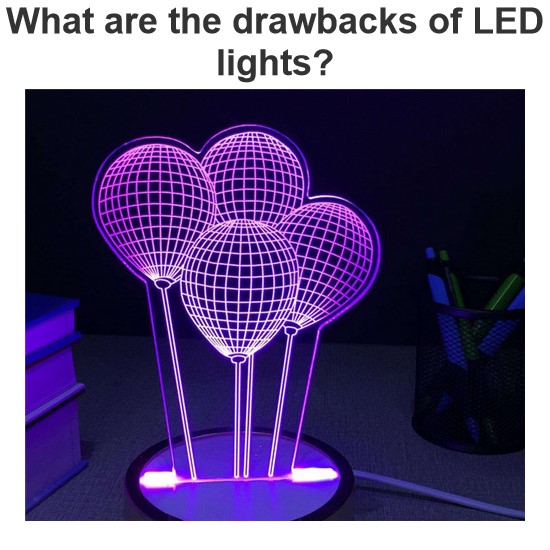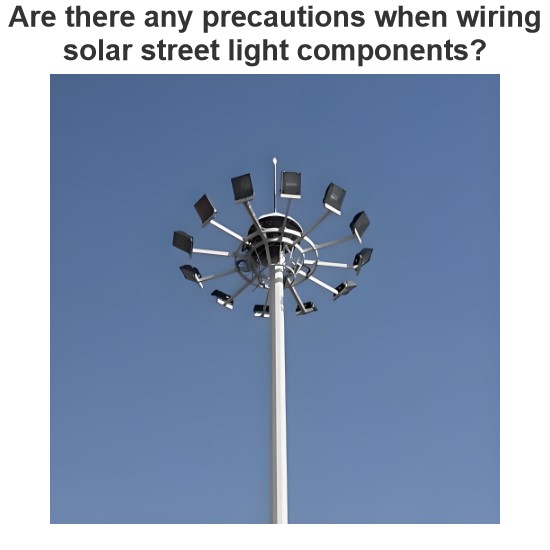Radiant Flux: A Comprehensive Guide
Radiant flux is a term that describes the amount of radiant energy that is emitted, reflected, transmitted, or received by an object per unit of time. Radiant energy is the energy carried by electromagnetic waves, such as light, radio waves, microwaves, infrared, ultraviolet, and X-rays. Radiant flux is also known as radiant power or optical power (in the case of light).
Radiant flux is an important concept in radiometry, which is the science of measuring and analyzing electromagnetic radiation. Radiant flux can be used to characterize the performance of light sources, detectors, optical components, and systems. It can also be used to calculate other radiometric quantities, such as radiant intensity, radiance, irradiance, radiant exitance, and radiosity.
In this article, we will explain what radiant flux is, how it is measured and calculated, how it relates to other radiometric and photometric quantities, and what are some of its applications and examples.
What is Radiant Flux?
Radiant flux is defined as the rate of change of radiant energy with respect to time. Mathematically, it can be expressed as:
Where:
Φeis the radiant flux in watts (W)
Qeis the radiant energy in joules (J)
tis the time in seconds (s)
Radiant energy is the total amount of energy that is transferred by electromagnetic waves across a surface or within a volume. It can be emitted by a source (such as a light bulb), reflected by a surface (such as a mirror), transmitted through a medium (such as air or glass), or absorbed by an object (such as a solar panel).
Radiant flux can be positive or negative depending on the direction of the energy transfer. For example, if a light source emits 10 W of radiant flux, it means that it loses 10 J of energy per second. On the other hand, if a detector receives 10 W of radiant flux, it means that it gains 10 J of energy per second.
Radiant flux depends on the wavelength or frequency of the electromagnetic radiation. Different wavelengths have different energies and interact differently with matter. For example, visible light has higher energy than infrared radiation and can be seen by human eyes. Ultraviolet radiation has even higher energy than visible light and can cause sunburn and skin cancer.
The radiant flux per unit wavelength or frequency is called spectral flux or spectral power. It can be denoted as Φe(λ) for wavelength or Φe(ν) for frequency. The total radiant flux over a range of wavelengths or frequencies can be obtained by integrating the spectral flux:
Where:
λis the wavelength in meters (m)
νis the frequency in hertz (Hz)
λ1and λ2are the lower and upper limits of the wavelength range
ν1and ν2are the lower and upper limits of the frequency range
How is Radiant Flux Measured?
Radiant flux can be measured using various types of instruments called radiometers. A radiometer consists of a detector that converts electromagnetic radiation into an electrical signal and a readout device that displays or records the signal.
The detector can be based on different principles, such as thermal effects (e.g., thermopile), photoelectric effects (e.g., photodiode), or quantum effects (e.g., photomultiplier tube). The detector can also have different characteristics, such as sensitivity, responsivity, linearity, dynamic range, noise level, spectral response, angular response, and calibration.
The readout device can be analog or digital and can show different units of measurement, such as watts, volts, amperes, or counts. The readout device can also have different features, such as display resolution, accuracy, precision, stability, sampling rate, and data storage.
Some examples of radiometers are:
Pyranometer: measures global solar irradiance (the radiant flux per unit area from the sun and sky) on a horizontal surface
Pyrheliometer: measures direct solar irradiance (the radiant flux per unit area from the sun only) on a surface normal to the sun
Pyrgeometer: measures longwave irradiance (the radiant flux per unit area from infrared radiation) on a horizontal surface
Radiometer: measures radiant flux from any source or direction
Spectroradiometer: measures spectral flux (the radiant flux per unit wavelength or frequency) from any source or direction
Photometer: measures luminous flux (the radiant flux weighted by the human eye’s sensitivity) from any source or direction.
How is Radiant Flux Calculated?
Radiant flux can be calculated using various formulas and models depending on the type and geometry of the source, the medium, and the receiver. Some of the common formulas and models are:
Planck’s law: calculates the spectral flux of a black body (an idealized object that absorbs and emits all wavelengths of radiation) at a given temperature
Stefan-Boltzmann law: calculates the total radiant flux of a black body at a given temperature
Lambert’s cosine law: calculates the radiant intensity (the radiant flux per unit solid angle) of a lambertian source (an idealized object that emits or reflects radiation equally in all directions) at a given angle
Inverse-square law: calculates the irradiance (the radiant flux per unit area) of a point source (an idealized object that emits radiation from a single point) at a given distance
Beer-Lambert law: calculates the attenuation (the reduction) of radiant flux as it passes through an absorbing medium
Fresnel equations: calculate the reflection and transmission of radiant flux as it encounters an interface between two media with different refractive indices
Snell’s law: calculates the refraction (the bending) of radiant flux as it passes from one medium to another with different refractive indices
Rayleigh scattering: calculates the scattering (the redirection) of radiant flux by particles smaller than the wavelength of radiation
Mie scattering: calculates the scattering of radiant flux by particles comparable to or larger than the wavelength of radiation
How does Radiant Flux Relate to Other Radiometric and Photometric Quantities?
Radiant flux is one of the basic radiometric quantities that can be used to derive other radiometric and photometric quantities. Some of the other quantities are:
Radiant intensity: the radiant flux per unit solid angle emitted by a point source in a given direction. The SI unit is watt per steradian (W/sr).
Radiance: the radiant flux per unit solid angle per unit projected area emitted by a surface or a volume in a given direction. The SI unit is watt per steradian per square meter (W/sr/m2).
Irradiance or radiant exposure: the radiant flux per unit area incident on a surface or within a volume. The SI unit is watt per square meter (W/m2) or joule per square meter (J/m2).
Radiant exitance or emittance: the radiant flux per unit area emitted by a surface or within a volume. The SI unit is watt per square meter (W/m2).
Radiosity: the radiant exitance plus the reflected irradiance of a surface. The SI unit is watt per square meter (W/m2).
Photometric quantities are similar to radiometric quantities, but they are weighted by the human eye’s sensitivity to different wavelengths of light. The weighting function is called the luminous efficacy function, and it has a maximum value of 683 lm/W at 555 nm. Some of the photometric quantities are:
Luminous flux: the radiant flux weighted by the luminous efficacy function. The SI unit is lumen (lm).
Luminous intensity: the luminous flux per unit solid angle emitted by a point source in a given direction. The SI unit is candela (cd).
Luminance: the luminous flux per unit solid angle per unit projected area emitted by a surface or a volume in a given direction. The SI unit is candela per square meter (cd/m2).
Illuminance or illuminance exposure: the luminous flux per unit area incident on a surface or within a volume. The SI unit is lux (lx) or lumen second per square meter (lm·s/m2).
Luminous exitance or luminous emittance: the luminous flux per unit area emitted by a surface or within a volume. The SI unit is lux (lx).
Luminosity: the luminous exitance plus the reflected illuminance of a surface. The SI unit is lux (lx).
What are some Applications and Examples of Radiant Flux?
Radiant flux is a useful quantity for many applications and examples involving electromagnetic radiation. Some of them are:
Lighting: radiant flux can be used to measure and compare the output and efficiency of different types of light sources, such as incandescent, fluorescent, LED, or laser. It can also be used to design and optimize lighting systems for different purposes, such as indoor, outdoor, or theatrical lighting.
Solar energy: radiant flux can be used to measure and estimate the amount of solar radiation that reaches the Earth’s surface or a solar panel. It can also be used to calculate the power and energy output of solar cells and systems.
Remote sensing: radiant flux can be used to measure and analyze the properties and characteristics of objects and phenomena from a distance, such as temperature, composition, vegetation, pollution, weather, or climate. It can also be used to create images and maps of the Earth or other celestial bodies using satellites or telescopes.
Optical communication: radiant flux can be used to measure and optimize the performance and capacity of optical communication systems, such as fibre optics, free-space optics, or optical wireless. It can also be used to encode and transmit information using different modulation techniques, such as amplitude, frequency, or phase modulation.
Laser technology: radiant flux can be used to measure and control the output and quality of laser beams, such as power, intensity, divergence, coherence, polarization, or mode. It can also be used to create and manipulate various effects and phenomena using lasers, such as cutting, welding, drilling, engraving, printing, scanning, surgery, holography, or spectroscopy.
Conclusion
Radiant flux is a fundamental concept in radiometry that describes the amount of radiant energy that is emitted, reflected, transmitted, or received by an object per unit of time. Radiant flux depends on the wavelength or frequency of electromagnetic radiation and varies with different sources and media. Radiant flux can be measured using radiometers and calculated using various formulas and models. Radiant flux can also be used to derive other radiometric and photometric quantities that characterize different aspects of electromagnetic radiation. Radiant flux has many applications and examples in various fields and domains involving electromagnetic radiation.
Statement: Respect the original, good articles worth sharing, if there is infringement please contact delete.
Electrical4U is dedicated to the teaching and sharing of all things related to electrical and electronics engineering.




